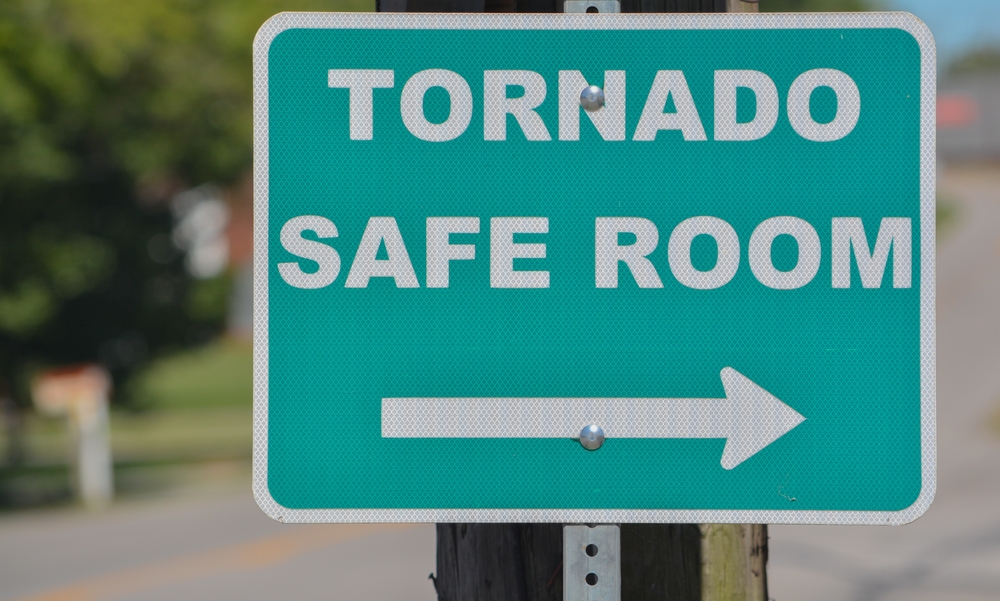What Employers Should Do To Prepare For Natural Disasters
What Employers Should Do To Prepare For Natural Disasters
The EF4 tornado that roared through Mayfield, Kentucky, in the late hours of Dec. 10, 2021, left catastrophic damage in its wake.
It almost completely leveled Mayfield Consumer Products LLC’s candle factory. Sadly, dozens of employees were working a late shift at the facility when the tornado hit, and nine people died while many more were injured.
In the aftermath, it was reported that several survivors claimed that they wanted to leave the factory before the tornado hit, but claim they were threatened with termination if they did so. Subsequently, these employees filed a lawsuit, Johnson v. Mayfield Consumer Products, now pending in the U.S. District Court for the Western District of Kentucky.[1]
Unfortunately, every region of the U.S. is at risk to extreme weather events, whether it’s tornadoes, wildfires, hurricanes, tropical storms, floods, earthquakes or volcanoes. Once-predictable weather patterns have given way to more erratic and uncertain conditions.
As we move into the most active time of hurricane season, there is no better time than now for employers to put emergency action plans in place for dealing with natural disasters and other emergencies. While this list is not exhaustive, here are some key considerations.
Follow OSHA standards and keep employees safe.
The Occupational Safety and Health Administration requires employers to provide safe and healthful working conditions, and includes protecting employees from unreasonable danger in the workplace.
OSHA defines a workplace emergency as a natural or man-made “situation that threatens workers, customers, or the public; disrupts or shuts down operations; or causes physical or environmental damage.”
Therefore, employers should identify reasonably foreseeable emergencies and have plans in place to keep employees safe in the event of such events.[2]
For example, adopting procedures to be followed in case of an evacuation due to fire or flooding, or creating a safe room for employees to report to in the event of a tornado or severe storm, can protect employees and, in extreme situations, may save lives and prevent injury.
When asking employees to report to work during adverse weather, there are a number of hazards to consider, such as vehicle accidents, downed power lines, and exhaustion from working extended shifts or dehydration.
When the threat of severe weather arises, employers should consider the possibility of remote work, schedule adjustments or workplace closures so that employees can avoid these dangers.
Include communication procedures as part of the emergency action plan.
Communication before, during and after a weather event or emergency is critical. Employers should have a communication plan in place and communicate it clearly to their employees.
The plan should provide basic and clear instructions to employees so that they know how to obtain necessary information in the event of an emergency. It is difficult to think clearly in the midst of chaos, so it is important for employees to know in advance what they are expected to do.
Be sure to maintain current contact information for all employees and have a process in place to ensure it is routinely updated.
Some employers implement a communication tree, where a few employees are designated to call a list of people, each of which calls another list of people, and so on until everyone has been contacted.
Other employers use technology to send out a recorded message or group text, or establish a call-in number to use during emergencies that employees can store in their contacts on their phones.
Whatever procedure an employer chooses, someone should be placed in charge of ensuring that it is communicated clearly and that it is followed, and that all employees have been contacted.
Understand how employees are compensated during a disaster.
The Fair Labor Standards Act outlines a number of regulations with regard to employee compensation. How employees are paid during a disaster will depend on if they are classified as exempt or nonexempt.
Employers are required to pay nonexempt employees only for hours actually worked, and it does not matter whether the reason for not working is the result of a decision made by the employer or employee.
For example, if the employer decides to close the workplace and sends employees home in preparation for a potential natural disaster, there is no obligation to pay nonexempt employees for any time that they are not actually working after the closure.
There are, however, potential exceptions for waiting time or on-call time, like if the power is out at the workplace, but the employees are required to stick around in case it comes back on. There are also possible exceptions for nonexempt employees who receive fixed salaries for fluctuating workweeks.
If maintenance workers or nurses are required to stay on premises and cannot leave, they must be compensated, even if they do not perform any work.
As for exempt employees, if there is any work performed during the week, the employees are required to be paid their full weekly salary. Therefore, if a workplace is closed due to a natural disaster or other emergency for less than a full workweek, the employer will be required to pay the full salaries of the exempt employees for the week.
Closures of an entire week, where the exempt employees do not perform any work during that week, do not require payment.
Employers can require employees to use paid time off or other leave when they are unable or choose not to work because of a natural disaster or other emergency, but this policy should be clearly communicated to employees — ideally, in the employee handbook.
It is also important for employers to consider how they maintain payroll and timekeeping records. In the event of catastrophic damage to the physical workplace, records can be lost, making it difficult or impossible for employers to process payroll. Make sure appropriate backups — like an offsite backup server or cloud storage — are in place with appropriate protections.
Be ready to address requests for leave and accommodation.
Following a natural disaster, employers are often hit with increased requests for leave and accommodation.
The Family and Medical Leave Act requires employers with at least 50 employees to give leave to employees who cannot perform their jobs because they suffered a physical or mental illness or injury — i.e., a serious health condition — or they must care for a spouse, child or parent with a serious health condition, including as a result of a natural disaster.
Beyond the FMLA, there may also be state and local laws that require leave to be provided.
Mental or physical injuries resulting from a natural disaster can also lead to increased requests for accommodation under the Americans with Disabilities Act. Under the ADA, employers are required to provide reasonable accommodations to qualified individuals with disabilities who are employees or applicants for employment, unless doing so would create an undue hardship for the employer.
Thus, accommodations may be required for employees who have been injured — either physically or mentally — or have had previous medical or mental health conditions exacerbated as a result of a natural disaster.
Prepare employees through training.
Once an emergency action plan is in place and has been communicated to employees, the next step is training. In a crisis, employees are going to be much more likely to remember a plan and their role in it if they have been properly trained.
The act of physically going through the motions of an organized evacuation like a fire drill makes it much more likely that the evacuation plan will be followed in the event of a true emergency.
The same holds true for other portions of an emergency action plan, such as who to contact for notifications and how such contact should be made, where to shelter in the event that it is unsafe to leave the workplace, and how to protect work-related equipment and data.
The Key Takeaway
Don’t wait until disaster strikes. It is important to plan ahead. Develop an emergency action plan so that you can protect employees, minimize confusion during an emergency and get back to work as quickly as possible following any disaster-related shutdowns.
This article first appeared in Law360 on August 4, 2022 and is republished here with permission from the publication.
The opinions expressed are those of the author(s) and do not necessarily reflect the views of the firm, its clients, or Portfolio Media Inc., or any of its or their respective affiliates. This article is for general information purposes and is not intended to be and should not be taken as legal advice.
[1] Johnson, et al. v. Mayfield Consumer Products, LLC, Case No. 5:22-cv-00044-BJB-LLK, pending in the Western District of Kentucky.
[2] A good resource for employers is a booklet titled How to Plan for Workplace Emergencies and Evacuations published by OSHA and the U.S. Department of Labor.








